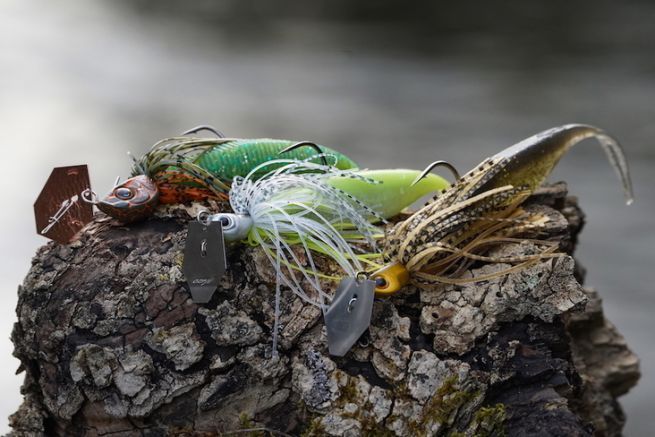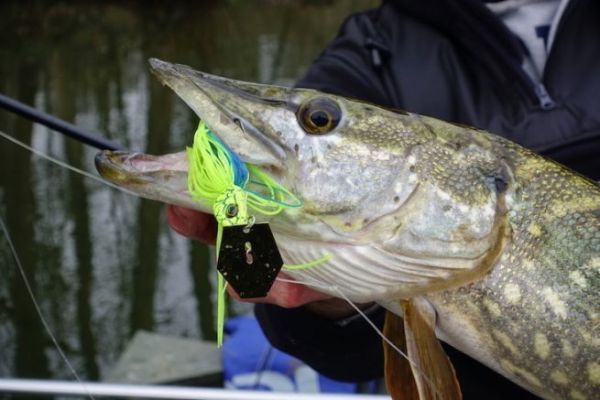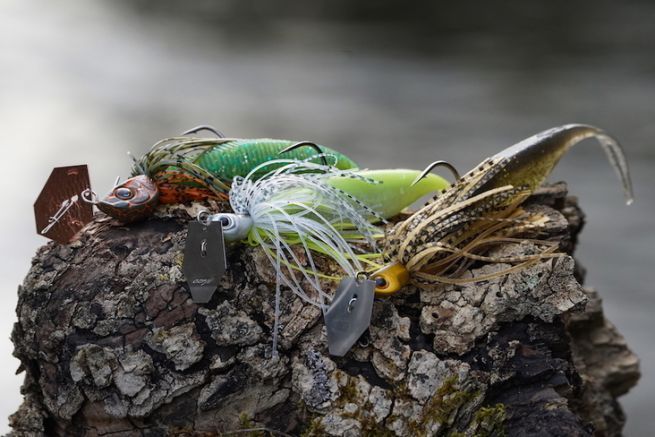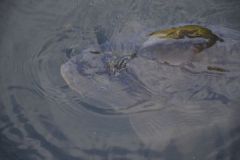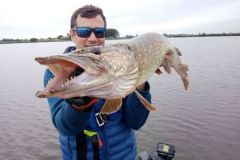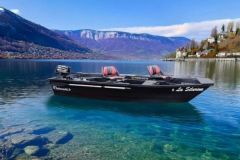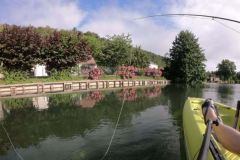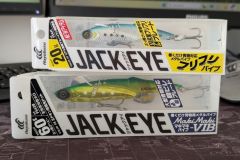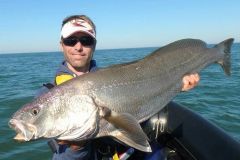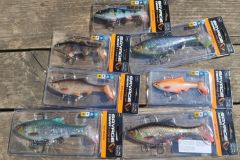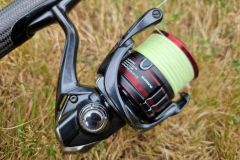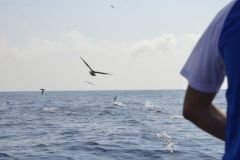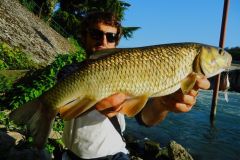The Bladed Jig, a subtle mechanism
The Bladed Jig may look crude, but it's actually a much more subtle lure than you'd think. And that's largely down to the type of trailer (soft lure that's threaded onto the hook) used.
The Grub trailer
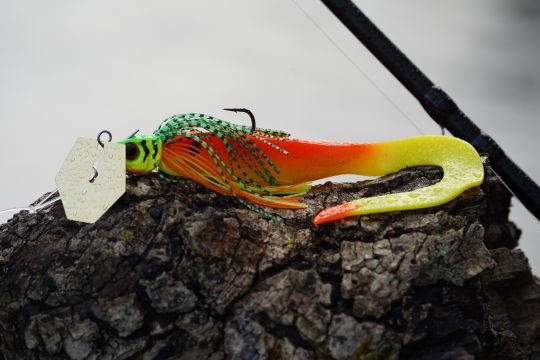
We often hear that the ideal trailer for the Blade Jig is the Grub. The addition of a Grub, more than an extra vibration, will above all add volume, the powerful vibrations emitted by the paddle having a distinctly dominant character, all without counteracting the action of the paddle on a cast-rake retrieve.
On the other hand, the Grub's fine vibrations will be of real interest during the lure's descent phases in light pull or stop-and-go animation.
Of course, if we had to keep just one trailer, it would certainly be the Grub. Nevertheless, it's too reductive to limit the use of the Bladed Jig to this association.
Finesse trailer
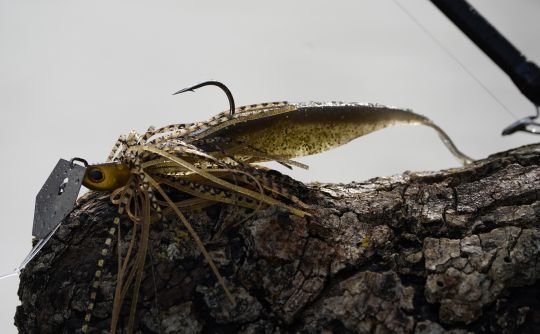
The principle behind using a Finesse soft lure in a trailer is basically the same: add volume without getting in the way of the paddle. As mentioned in previous article a Bladed Jig is in a way the combination of a Blade and a Rubber Jig. Considering the latter, the addition of a Finesse can prove useful in certain conditions when it's a question of pausing on the bottom and making the lure twitch slightly on the spot as you would with a Rubber Jig. This can allow, with one and the same lure, to isolate more quickly certain parameters: activity level and holding height of the fish in the water column.
The Shad trailer
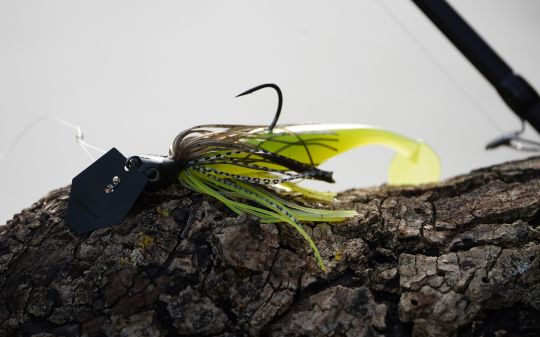
For pure linear fishing, this combination is not necessarily ideal, as the vibratory movement of the Bladed Jig's paddle will be disturbed by the shad's tail. The larger the shad's tail, the greater the opposition. In this case, a certain proportionality should be maintained between the size of the Shad's tail and that of the Bladed Jig's paddle.
Nevertheless, the erratic swimming resulting from the association of a Blade Jig with a Shad is a parameter I can look for on spring and summer fishing. The Shad also has the effect of making the rig rise and move higher in the water column, but also of slowing down the rig's descent to the bottom during stall phases. It's a combination I can easily use when fishing weedbeds in particular. In winter, what I'm looking for when using a trailer shad is an alternative in terms of vibrations on the descent phase.
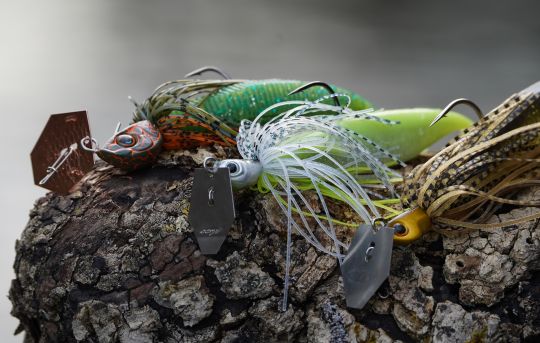
The 3 working phases of a Bladed Jig and its trailer
Indeed, a Bladed Jig is not a lure that should be reserved for basic casting-ramming because, combined with a trailer, it will fish in 3 very distinct phases while sending very different signals depending on these phases.
1) The traction or linear recovery phase, during which the dominant vibration emitted is that of the Bladed Jig's paddle.
2) The unhooking phase and the descent to the bottom where the only vibrations emitted are those of the trailer (Finesse, Grub or Shad).
3) The phase where the lure is placed on the bottom and remains fishable thanks to the deployment of the Bladed Jig's skirt in the manner of a Rubber Jig. The use of a Finess trailer is more suitable in this case.

 /
/ 